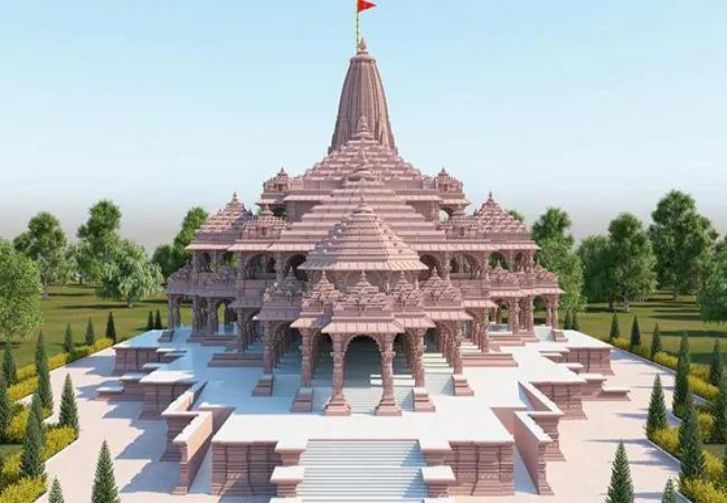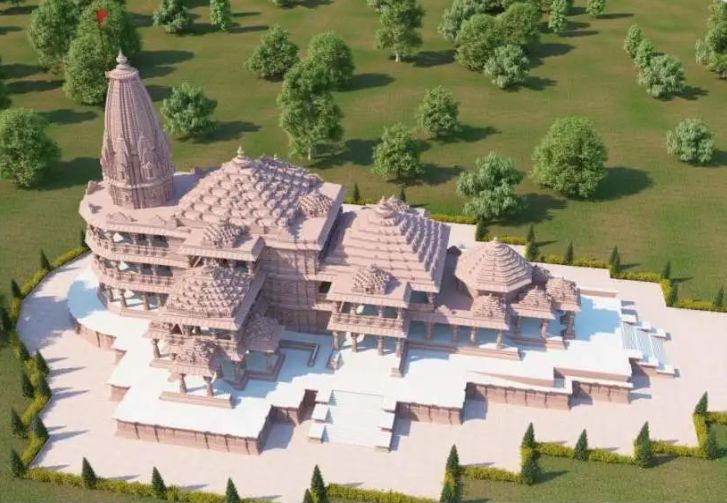
Ayodhya Ram Mandir, standing as a majestic testament to India’s rich cultural heritage, is a site that evokes deep emotions and holds immense religious significance for millions of Hindus worldwide. Located in the holy city of Ayodhya, Uttar Pradesh, the temple’s history is interwoven with centuries of devotion, making it one of the most revered and controversial sites in the country. This blog embarks on a journey to explore the fascinating history, profound significance, and ongoing developments surrounding the construction of the magnificent Ram temple in Ayodhya.
Ayodhya Ram Mandir’s history is deeply rooted in Hindu mythology and religious beliefs. It is widely believed to be the birthplace of Lord Rama, one of the most revered deities in Hinduism. According to the epic Ramayana, Ayodhya was a prosperous kingdom ruled by Lord Rama’s father, King Dasharatha. The temple is said to mark the exact spot where Lord Rama took his first steps on Earth, solidifying its status as a sacred pilgrimage site for devout Hindus.
In the 16th century, the Mughal Emperor Babur ordered the construction of a mosque, known as the Babri Masjid, at the site believed to be the birthplace of Lord Rama. This led to a prolonged and contentious dispute between Hindu and Muslim communities, with both groups claiming religious ownership of the land. The Babri Masjid remained a source of tension and conflict for centuries, culminating in its demolition by Hindu activists in 1992.
Explore The Journey Towards The Grand Temple of Lord Rama in Ayodhya

Following the demolition of the Babri Masjid, a protracted legal battle ensued, seeking the restoration of the site to Hindus for the construction of a Ram temple. In a landmark judgment in 2019, the Supreme Court of India ruled in favor of the construction of a Ram temple at the disputed site. This verdict paved the way for the establishment of the Shri Ram Janmabhoomi Teerth Kshetra Trust, responsible for overseeing the temple’s construction.
Lord Rama Temple‘s Architectural Splendor and Design
The proposed Ram Temple in Ayodhya is envisioned as a magnificent architectural marvel that will blend traditional Hindu temple designs with modern engineering techniques. The temple’s design incorporates elements from ancient Indian architecture, such as intricate carvings, soaring spires, and ornate ornamentation. It aims to be a symbol of cultural pride, unity, and devotion for Hindus worldwide.
Ongoing Developments and Future Vision
The construction of the Ram temple in Ayodhya is currently underway, capturing the attention and anticipation of millions of devotees. The project involves the development of a grand temple complex, including a spacious courtyard, pilgrim facilities, and a museum dedicated to Lord Rama’s life and teachings. Upon its completion, the temple is expected to become a major pilgrimage center, attracting millions of visitors from India and around the world.
Ayodhya Ram Mandir represents a profound fusion of history, faith, and cultural identity for Hindus across the globe. Its significance extends far beyond its physical structure, embodying the collective aspirations and devotion of millions. As the grand temple takes shape, it stands as a symbol of unity, resilience, and the enduring power of faith. The journey towards the completion of the Ayodhya Ram Mandir will continue to inspire and captivate generations to come.
What is the historical importance of Ayodhya Ram Mandir?
Ayodhya, considered the birthplace of Lord Rama, holds immense religious importance for Hindus. It is believed to be where Lord Rama, an incarnation of Lord Vishnu, spent his childhood. The Ram Mandir marks the reverence and devotion that Hindus have towards Lord Rama and his divine presence.
Understand: What was the Babri Masjid and Ayodhya Ram Mandir dispute?
The Ayodhya Ram Mandir issue has a troubled past marked by the demolition of the Babri Masjid in 1992. The mosque was constructed during the Mughal era and stood on the disputed land. Its destruction led to communal tensions and legal battles, making the Ram Mandir issue a subject of both religious and political significance.
The legal battles and Supreme Court verdicts for the same
The decades-long legal dispute reached a turning point in 2019 when the Supreme Court of India delivered its landmark verdict in favor of the construction of the Ram Mandir. The court ruled that the disputed land should be handed over to a trust to construct a temple, while an alternative piece of land would be given to the Muslim community to construct a mosque.
The construction and progress of Ram Mandir in Ayodhya
The construction of the Ram Mandir began in 2020 with the laying of the foundation stone by Prime Minister Narendra Modi. It is being built using traditional architectural techniques, blending ancient craftsmanship with modern technology. The temple’s design incorporates elements of North Indian temple architecture and is expected to be a magnificent tribute to Lord Rama.
What is the cultural and social impact of Ayodhya Ram Mandir in India?
The Ram Mandir holds not only religious but also cultural and social significance. It represents the resilience of the Hindu faith and the collective desire to preserve India’s cultural heritage. The construction of the temple in Ayodhya, UP India is seen as a symbol of unity, bringing people together from diverse backgrounds in the spirit of devotion.
What is Lord Ram’s Statue Pran Pratistha?

Lord Ram’s statue Pran Pratistha within the newly built Ram temple in Ayotha will take place to perform some rituals. All those rituals are known as Pran Pratistha and all these will be formed in the newly built Ram temple in Ayodhya.
When is Shri Ram Lalla murti Pran Pratistha?
The revered Lord Ram, often affectionately referred to as Ram Lalla, holds a special place in the hearts of millions of devotees across India. In the Hindu tradition, Ram Lalla symbolizes the child form of Lord Rama, one of the most beloved incarnations of Lord Vishnu. As per the Hindu calendar, Ram Lalla’s multi-pran practice, a significant religious ceremony, will take place on January 22, 2024.
This auspicious occasion will witness the gathering of prominent religious leaders, including saints, scholars, and spiritual guides, from various parts of the country. Their presence will add solemnity and spiritual depth to the event.
The honorable Prime Minister of India, Shri Narendra Modi, is also expected to grace the occasion with his presence. His participation demonstrates the government’s commitment to preserving and promoting India’s rich cultural heritage, including its religious traditions and practices.
The multi-pran practice holds great importance in Hinduism and is believed to bring spiritual purification, blessings, and good fortune to those who participate. During the ceremony, devotees chant sacred mantras, offer prayers, and engage in rituals to seek the divine grace of Lord Ram.
This event is not only a religious gathering but also a testament to the unity and diversity of India’s cultural fabric. It fosters a sense of community among devotees and reinforces the values of respect, tolerance, and inclusivity that are deeply ingrained in the country’s ethos.
As the date of Lord Ram’s multi-pran practice approaches, devotees across India are eagerly preparing to participate in this significant event. With hearts filled with devotion and faith, they will come together to celebrate the divine presence of Lord Ram and seek His blessings for a prosperous and harmonious future.
Conclusion
The Ayodhya Ram Mandir is a testament to Hindus’ deep-rooted faith and determination. Its construction marks a new chapter in the history of Ayodhya and is a beacon of hope for millions of devotees. As the temple takes shape, it serves as a reminder of India’s rich cultural heritage and the enduring power of faith.







